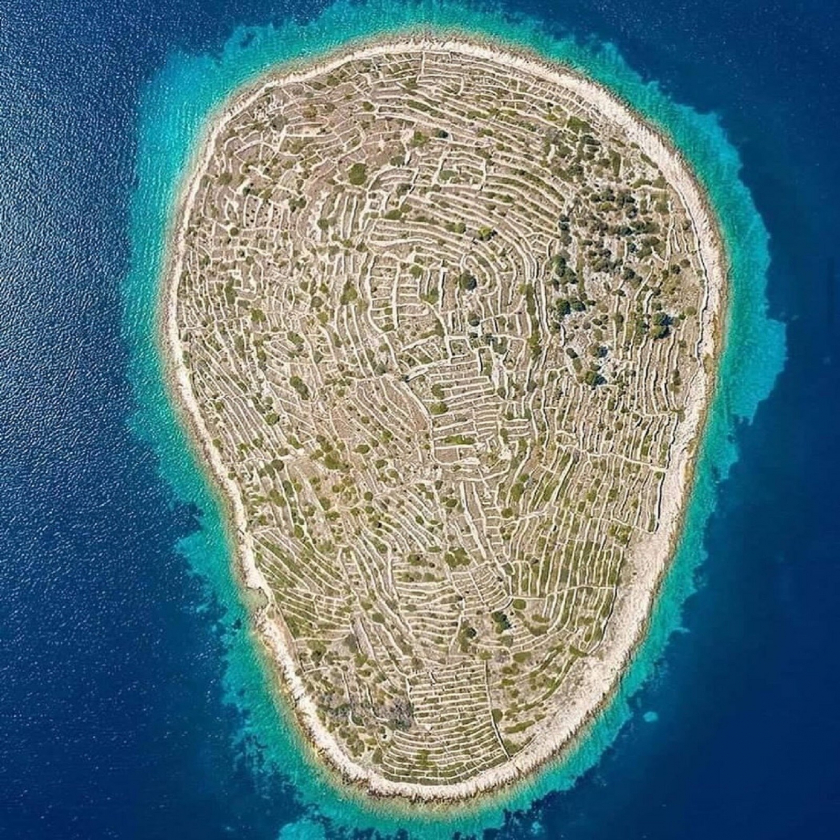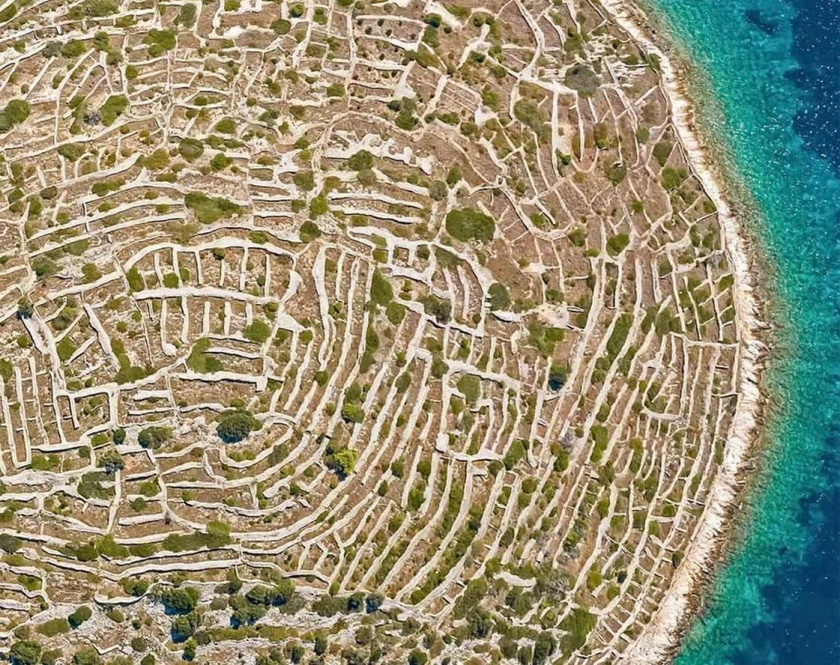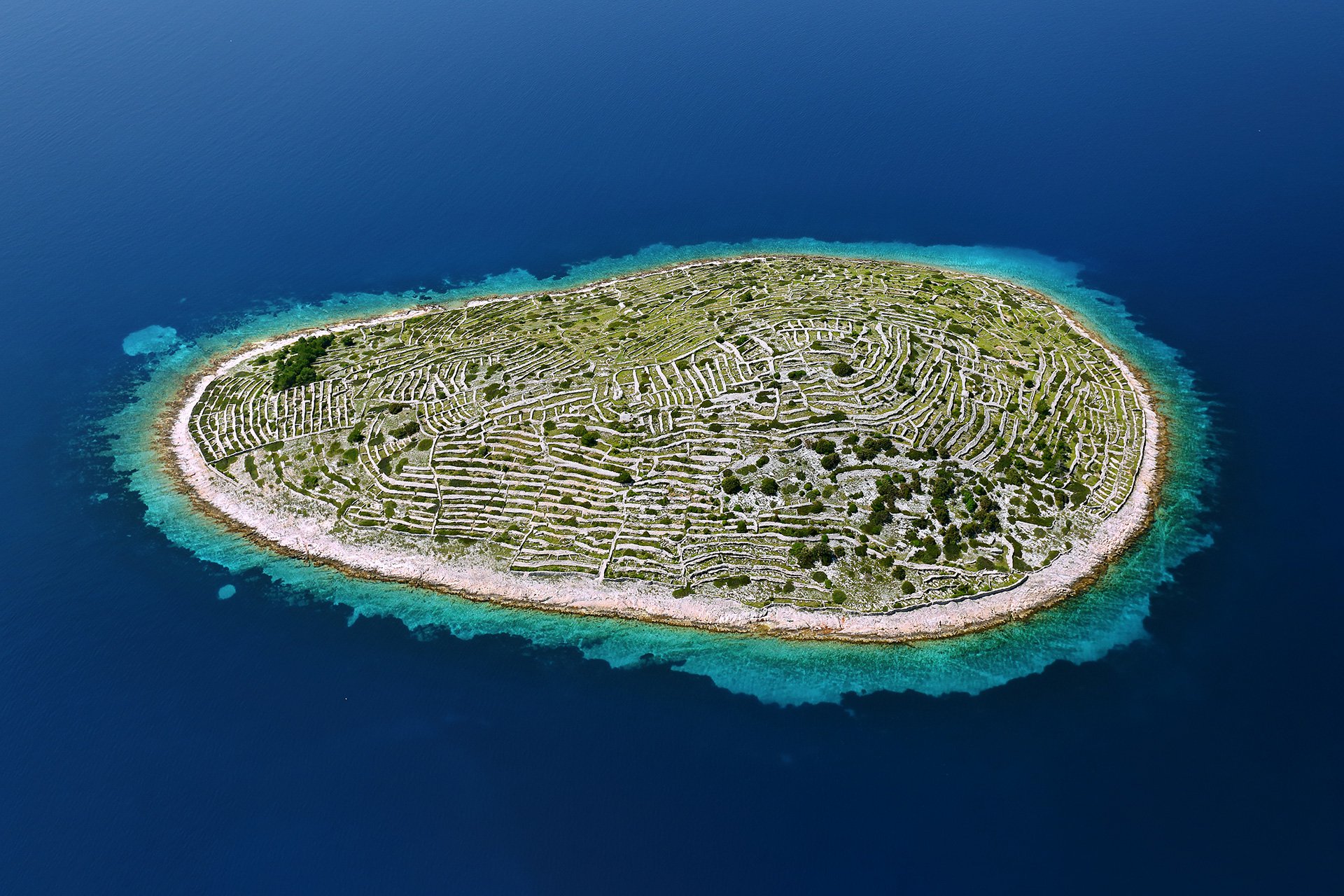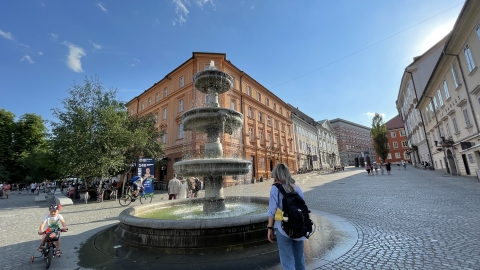Bavljenac Island is one of 249 islands of the Sibenik archipelago. The island has a unique oval shape and is covered by a system of stone walls 23 km long and 0.14 km in area.2and is currently uninhabited. While the fingerprint image might immediately remind you of an ancient maze, the waist-high walls were actually designed by farmers to make farming easier.

Panoramic view of Bavljenac Island
Dating back to the 1800s, the waist-high stone walls were created using a technique known as “dry stone walling,” which involves carefully stacking and nesting rocks into solid blocks. The walls are a testament to a time when persistent, patient work was key in taming the harsh terrain of the Adriatic coast.
Bavljenac was once a sun-drenched island of fragrant vineyards, orange and tangerine orchards. Kaprije farmers cleared Bavljenac of its “harsh vegetation” to plant fruit trees. They built stone walls to divide plots and provide windbreaks.

The fingerprint effect of Bavljenac island is created by a network of old stone walls
Today, the island no longer has any gardens, but the stone walls are still intact. In 2018, UNESCO officially recognized these systems of dry stone walls as one of the intangible Cultural Heritage in need of protection.
With its unique shape, Bavljenac Island has become famous and attracts tourists to explore. Coming here, tourists can join a boat tour around the island to fully admire this "giant fingerprint". However, these tours cannot dock on the island because there is no pier.

Tourists can join a boat tour around the island.
Since the photos taken from above looking down on Baljenac Island started to spread on social networks, the “fingerprint” island suddenly became famous at a dizzying speed and began to be visited by a large number of tourists.
Although the locals still welcome visitors, most of them are still concerned about the walls being destroyed by careless tourists.



































